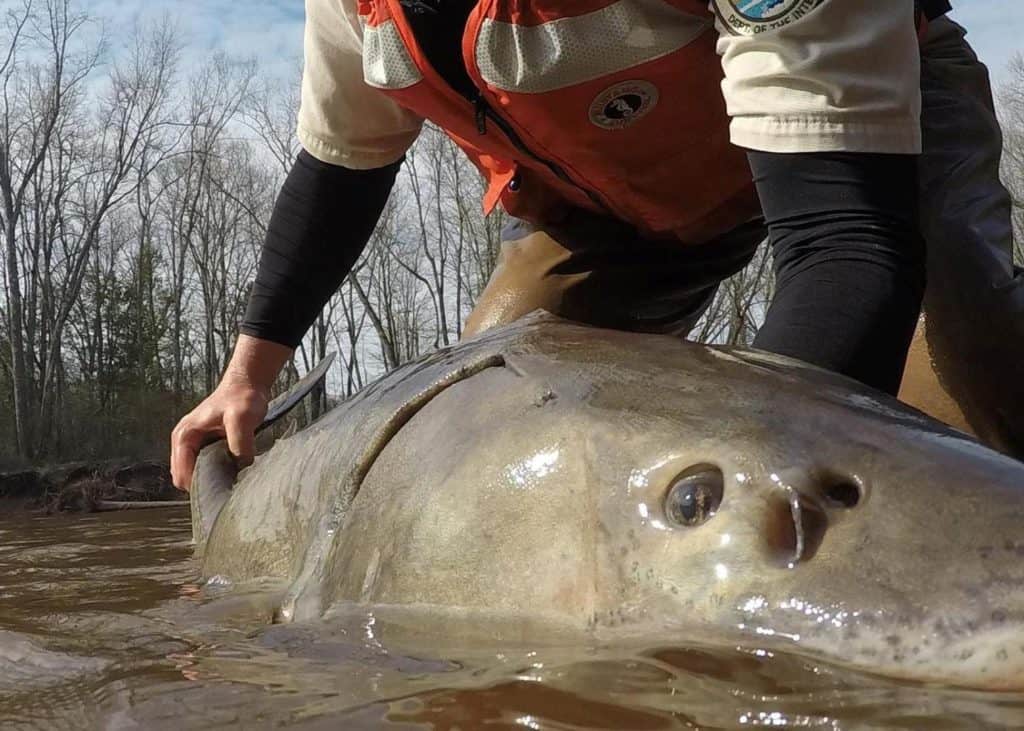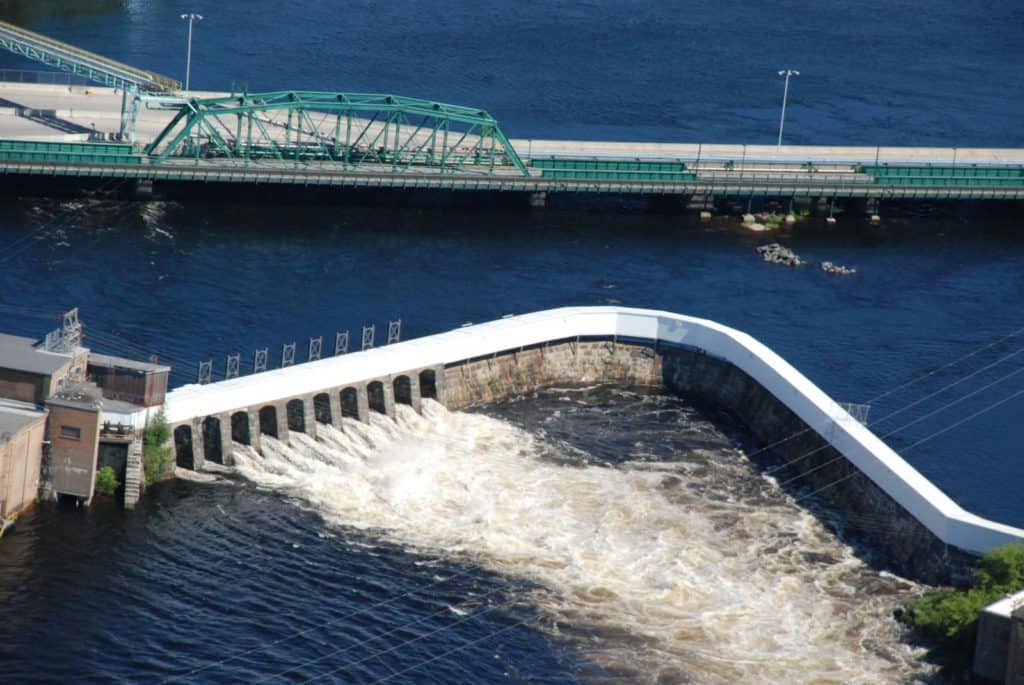
A new international program in place this year is believed to have helped protect the eggs of endangered lake sturgeon during the sensitive spawning season. An agreement to monitor fish activity and water flows on the Rainy River ensured enough water remained in the river while the fish were actively seeking to reproduce.
The new process was put in place in response to an event in 2013, when dam operators reduced the flow and quickly lowered downstream water levels. That left high and dry countless sturgeon eggs which had recently been laid.
Dams have historically been bad for sturgeon, blamed for much of the population decline in the 20th century, flooding or blocking access to streams where they historically spawned.
Lake sturgeon have somewhat recovered from near extinction that was driven by overfishing, as well as habitat loss and contamination from pulp mills and municipal sewers on the Rainy River. While they were nearly gone by 1941, the Rainy River now supports a popular fishery, with record-sized fish occasionally caught. The fish can reach six feet long and more than 100 lbs, with females living up to 150 years. Thanks to years of restoration and stocking, there are now about 100,000 sturgeon in the Rainy River. But their overall population is far reduced from what it once was, and the fragile population requires close monitoring and protective actions.
“The population is a fraction of what it was historically 100 years ago,” Matt DeWolfe, engineering adviser to the International Rainy-Lake of the Woods Watershed Board’s Water Levels Committee, told the International Joint Commission.
Dam difficulties

A dam on the Rainy River where it forms the international border between International Falls, MN and Fort Frances, ON helps maintain stable water levels on Rainy Lake, which includes Voyageurs National Park and numerous islands, homes, and cabins.
Now, operations are also taking into consideration the survival of lake sturgeon. With sturgeon slow to reach sexual maturity (15 years for males and 25 years for females), and each female only reproducing every two to four years, an unsuccessful year can put a significant dent in future populations. While the fish spend most of their year in large lakes like Lake of the Woods and Rainy, they migrate up the rocky rivers to spawn in May and June.
Lake of the Woods was described by fisheries biologists in 1908 and 1909 as “greatest sturgeon pond in the world.”
The process put in place after the 2013 event was to first monitor water temperatures in the river. Fishery scientists have determined that two consecutive days of 53-degree Fahrenheit (12 degrees Celsius) water temperatures mean spawning is probably underway. Observers visit the river to watch for fish and confirm they are spawning.
Sturgeon spawn in shallow rivers with clear water and gravel or cobble bottoms free of silt and sand, which generally means fast flow.
“During this time the males arrive before the females and neither forage for food until they leave the spawning grounds,” the Minnesota Department of Natural Resources says. “The females, accompanied by two males, lay hundreds of thousands of eggs generally in one or two days and the males fertilize the eggs after they are released from the female.”
Timing is everything
Sturgeon eggs hatch after five to eight days, according to the DNR, and can swim to safe waters after about another 10 days. Once again this year, spawning conditions came right before when the dam operators planned to reduce flows out of Rainy Lake. But this year, the reduction was delayed by about 20 days until it was determined spawning was concluded and eggs were out of danger.
Earlier this year, the U.S. Fish and Wildlife Service said it would reexamine lake sturgeon for possible protection by the Endangered Species Act. The announcement came in response to a lawsuit by the Center for Biological Diversity. Listing sturgeon as federally-endangered could require the government to designate “critical habitat,” and manage those areas to protect the species. Conservation could include actions such as regulating dam flows to protect spawning.

